- RadioActive
- Moderator
 Offline
Offline
TV Guide Magazine Turned 70 On Monday
It's long outlived its usefulness, but there was a time anyone who watched TV probably had a copy of TV Guide on their coffee table. Back before YouTube, it was the one sure way to tell what was on your tube.
The magazine with all the listings officially turned 70 on Monday, having begun as a national publication on April 3, 1953. While almost no one subscribes to it these days (it still exists in the U.S.) there was a time it was the definitive guide to what was on television.
As many here know, I've got a pretty good collection of them, saved for reasons I can't quite recall, but grateful now that I did. They are like a day-by-day living history of the medium, encapsulating a TV past that even reruns can't quite muster. And they're also a symbol of inflation, having gone from its original price of 15 cents to now $4.99 for a booklet that covers two weeks of shows - and without much detail.
Still, they've become something of a collector's item, depending on who's on the cover. The very first one, showing Lucille Ball and her newborn infant, is worth thousands of dollars in good condition. Alas, that isn't one of mine!
In fact, the attached article shows several valuable guides, but unfortunately I have only a few of them. When I was at CFTR, I remember interviewing a guy in the U.S. named Jeffrey Kadet, who had every single TV Guide ever published at the time. I was jealous and wanted to know how he'd managed to hang onto them all those years! I wonder if his collection is still up to date.
So happy anniversary to an old houseguest I wish were still around in its original form. (Its articles are now at the most maybe a quarter of a page. And there's nobody like Cleveland Amory to review anything!) Still, like an old repeat, it's fun to see them again. I just wished I'd kept even more of them.
TV Guide Magazine Turns 70! Which Issues Are Most Valuable Today?
See every TV Guide cover ever published
- mace
- Member
 Offline
Offline
Re: TV Guide Magazine Turned 70 On Monday
Initially, the magazine was only available in 10 cities. The first expansion of cities to receive TV Guide later in 1953 included San Francisco, Detroit, Cleveland and Pittsburgh. Eventually, 140 local editions would be published weekly until July 26, 2005 when the National Editions were introduced. The first edition available in Canada was the "New York/Lake Ontario" Edition on June 26, 1953. Only five channels were listed including WSYR-3 Syracuse, WBEN-4 Buffalo, WHAM-5 [now WROC] WHEN-8 [now WTVH-5] and CBLT-9. Sometime in 1957, the "St.Lawrence" edition was introduced which covered Ottawa, Montreal, Burlington, Vt. and Plattsburg, N.Y. The "Dakota/Winnipeg" edition was the third to arrive in early 1961. By 1965, there were editions to cover B.C, Alberta, Saskatchewan and Western Ontario. Did you know that the logo changed only three times in its first 35 years? 1953-62, 1962-68, 1968-88. It has changed another six times since then.
- mace
- Member
 Offline
Offline
Re: TV Guide Magazine Turned 70 On Monday
Some more TV Guide fun facts. The "Color" rectangle was introduced in 1956 to indicate the several programs available that were not in black and white. By 1969, only a "C" was used to indicate a colour program. In 1972, it was eliminated and replaced with a "B&W" for the few series not broadcast in colour. Who holds the record for most TV Guide cover appearances? 1. Lucille Ball-39. 2. Johnny Carson-28. 3. Mary Tyler Moore/Michael Landon-27.
- Dale Patterson
- Member
 Offline
Offline 
Re: TV Guide Magazine Turned 70 On Monday
mace wrote:
Some more TV Guide fun facts. The "Color" rectangle was introduced in 1956 to indicate the several programs available that were not in black and white. By 1969, only a "C" was used to indicate a colour program. In 1972, it was eliminated and replaced with a "B&W" for the few series not broadcast in colour. Who holds the record for most TV Guide cover appearances? 1. Lucille Ball-39. 2. Johnny Carson-28. 3. Mary Tyler Moore/Michael Landon-27.
I enjoy your posts. You are a great source of information.
"Life without echo is really no life at all." - Dan Ingram
- RadioActive
- Moderator
 Offline
Offline
Re: TV Guide Magazine Turned 70 On Monday
SOWNY member Mace asked to see this, so I figured I'd post it here and maybe a few others would find it of interest. He wanted to know what channels were listed in the early days and what the Guide looked like back then. Here are four years, beginning with a rare 1953 edition from Philadelphia, before TV Guide went national. It was essentially a local listing back then. You'll notice the channels are up top and not given a lot of prominence.
One year later, the look had changed considerably. Also, notice how the 1955 edition contains only one Canadian channel. A year later, there were a lot more of them.
1954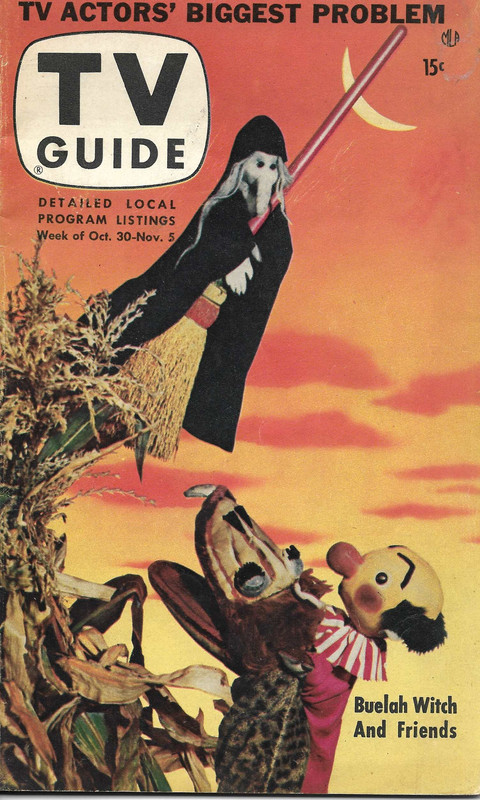
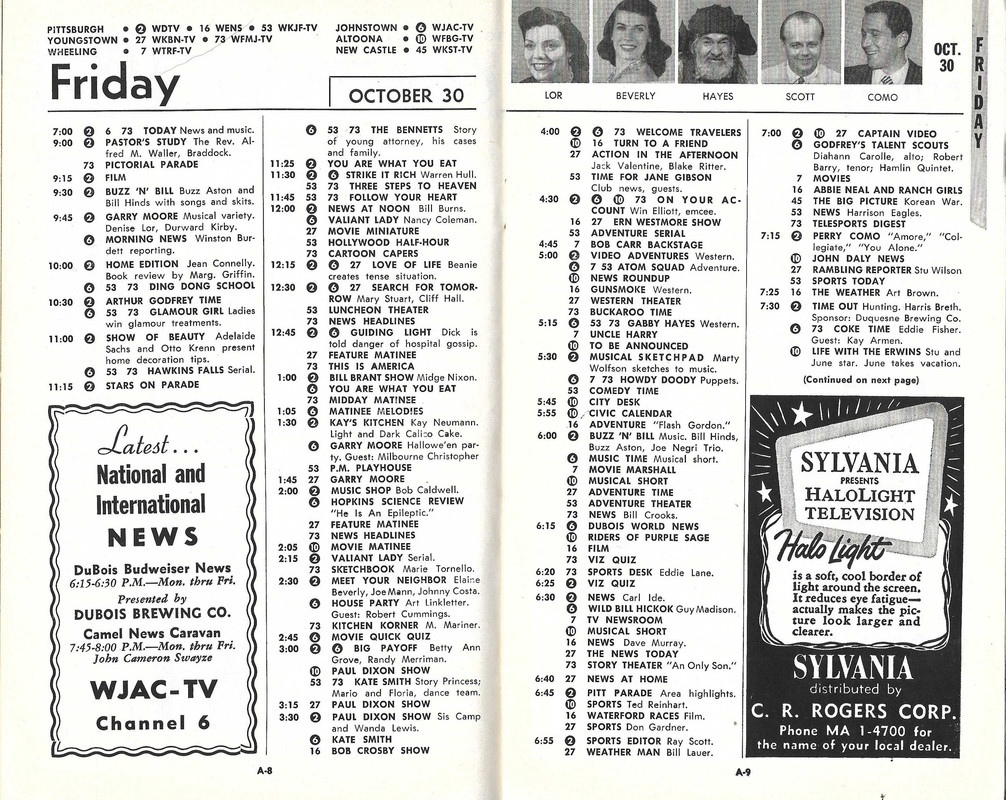
1954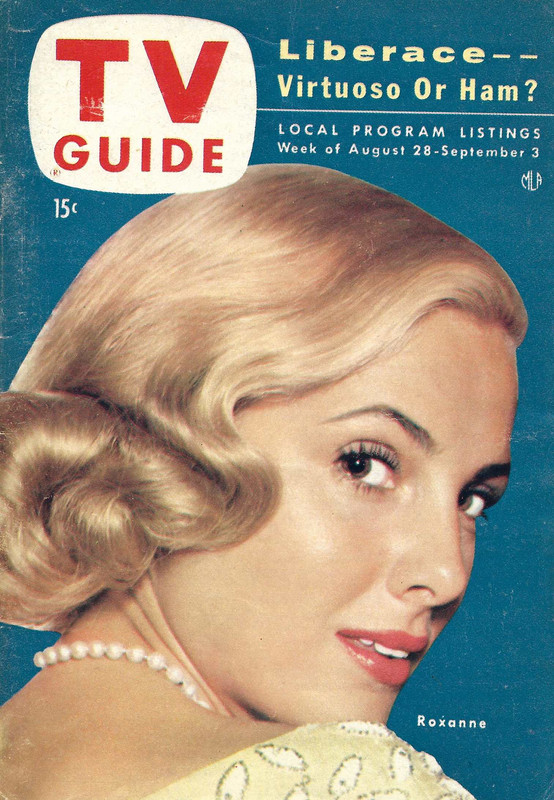

1955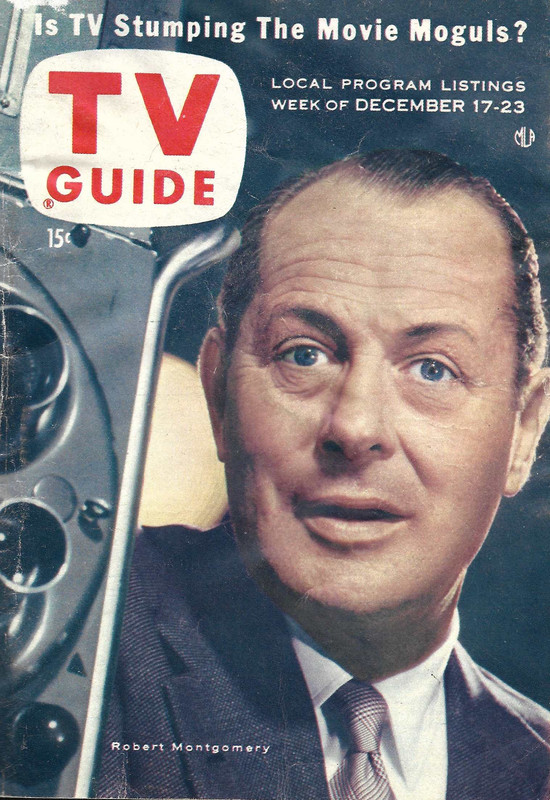
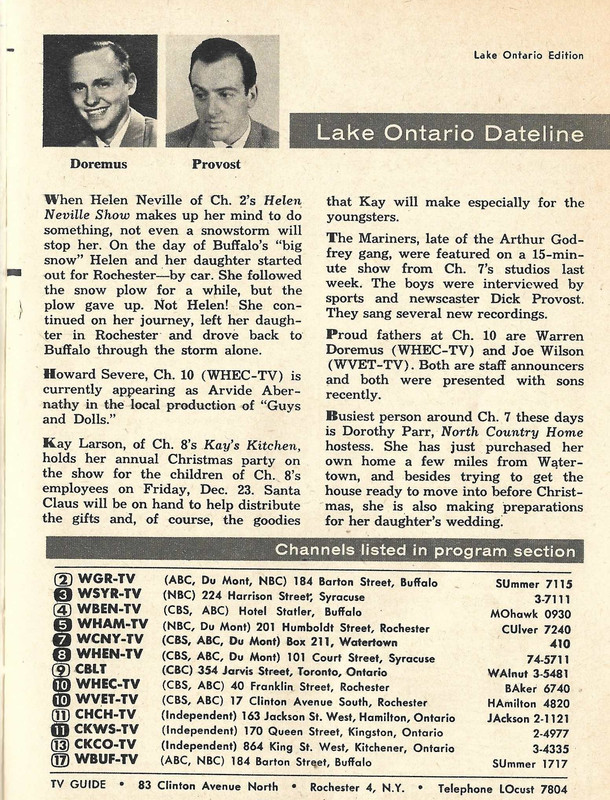
1956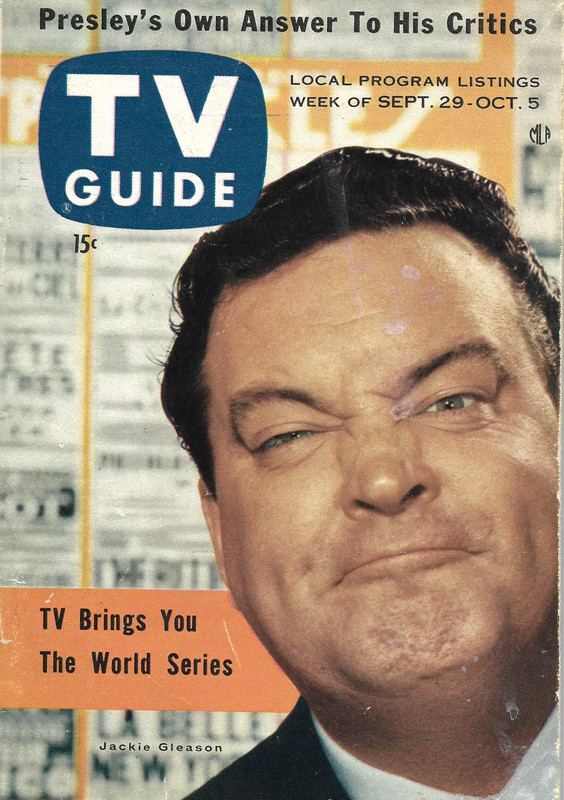
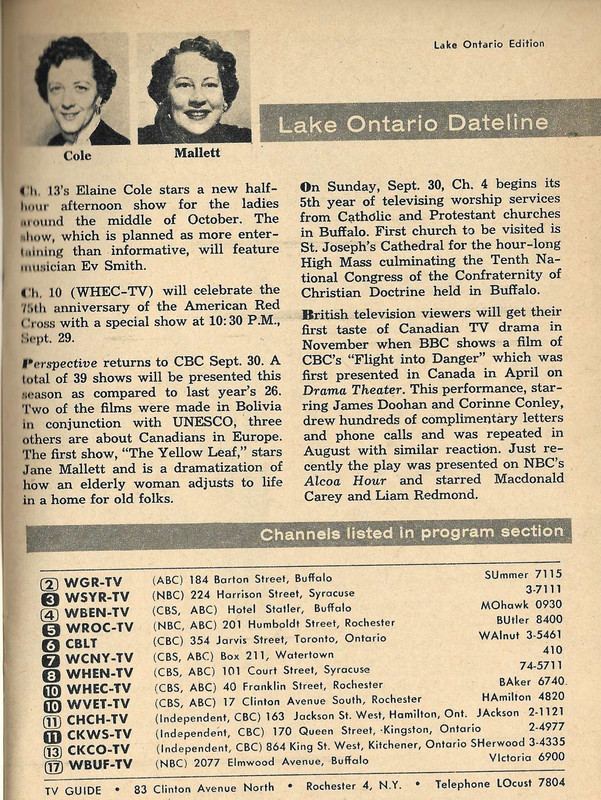
- •
- mace
- Member
 Offline
Offline
Re: TV Guide Magazine Turned 70 On Monday
Thanks for posting RA. Several thoughts. In the Pittsbugh guide, ch 2 was not KDKA. Those call letters would not surface until 1955. Where is CKVR? They signed on in Sept 1955. The 1956 issue still had no listing for them. Perhaps with all the Toronto antennas pointed to Buffalo, nobody could receive the channel, so no point in adding their program schedule yo the listings.
- Hansa
- Member
 Offline
Offline
Re: TV Guide Magazine Turned 70 On Monday
What do the "white" channels mean vs the "black" channels? I had thought black was local and white were distant but that doesn't seem to play out looking at which channels are which that doesn't make sense.
- betaylored
- Member
 Offline
Offline
Re: TV Guide Magazine Turned 70 On Monday
Thanks RA and mace for all the neat info and pictures on an iconic publication.
While reading i had a flashback to being 10 years old, getting my hands on the new issue, going through it and being excited to see a show or movie i really wanted to watch only to feel crushing disappointment when I realized it was on an American channel not available in my area or it was listed on a station we could watch in Montreal but was on past my bedtime.
And as an adult picking up the new issue at the front cash while grocery shopping, and over a coffee at home circling programs in the guide so I wouldn't miss them including those special occasion moments like every Easter, the yearly airing on ABC or CBS of the incredibly long because of all the commercial breaks classic movie "The Ten Commandments."
Last edited by betaylored (April 6, 2023 9:37 pm)
- Fitz
- Member
 Offline
Offline 
Re: TV Guide Magazine Turned 70 On Monday
Hansa wrote:
What do the "white" channels mean vs the "black" channels? I had thought black was local and white were distant but that doesn't seem to play out looking at which channels are which that doesn't make sense.
Even though the guide is listed as the Lake Ontario Edition. Seems the color scheme is based on Rochester as every single Rochester and close by station is in Black. Don't know why CBC 6 is in black though. Was their signal that strong.
Perhaps the there were some regional variations in the color scheme depending on where the guide was sold and this happened to be one from Rochester.
I believe white denoted fringe but still catchable ( with a rotar) in the area sold.
Cool Airchecks and More:
- mace
- Member
 Offline
Offline
Re: TV Guide Magazine Turned 70 On Monday
I seem to recall in later years when the Oshawa/Peterboro and Hamilton/Niagara editions were introduced, the Buffalo, Erie and Rochester channels had a black on white bullet. The Canadian channels were white on black.
- Fitz
- Member
 Offline
Offline 
Re: TV Guide Magazine Turned 70 On Monday
mace wrote:
I seem to recall in later years when the Oshawa/Peterboro and Hamilton/Niagara editions were introduced, the Buffalo, Erie and Rochester channels had a black on white bullet. The Canadian channels were white on black.
Here's a pic from a later edition of the Hamilton/Niagara guide from 1981:
Cool Airchecks and More:
 1 of 1
1 of 1